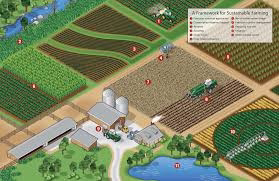Dairy From Business
Starting a dairy farm business can be a rewarding venture, but it requires careful planning and consideration. Here are some key steps to help you get started:
Familiarize yourself with the dairy industry, market trends, and consumer demand for dairy products in your area.
Conduct a feasibility study to determine the viability of starting a dairy farm in your location. Consider factors such as land availability, access to markets, competition, and potential profitability.
Develop a comprehensive business plan that outlines your goals, strategies, financial projections, and operational details.
Include information on the size of the farm, number of cows, infrastructure requirements, feed sources, labor needs, and marketing strategies.
Find a suitable location for your dairy farm that provides adequate land for grazing, barns for housing cows, storage facilities for feed, and milking parlors.
Ensure the farm has access to a reliable water source and is in compliance with zoning and environmental regulations.
Select the breed(s) of cows based on your market demand, climate conditions, and management capabilities. Popular dairy cow breeds include Holstein, Jersey, and Guernsey.
Purchase healthy cows from reputable breeders or auctions. Ensure they have proper identification and health records, including vaccinations and testing for diseases.
Hire skilled and experienced personnel to manage the day-to-day operations of the dairy farm, including feeding, milking, breeding, and general herd health.
Implement efficient record-keeping systems to track cow productivity, health, and breeding cycles.
Develop a herd health management plan in consultation with a veterinarian to ensure the well-being of your cows.
Develop a nutrition plan for your cows, including a balanced diet of pasture, hay, silage, and supplemental feed. Consult with a nutritionist to optimize cow health and milk production.
Establish relationships with local feed suppliers to ensure a reliable and cost-effective source of high-quality feed.
Decide whether you want to process and market your own dairy products or sell raw milk to processors.
If processing your own products, invest in the necessary equipment, such as pasteurizers, separators, and packaging machinery.
Develop marketing strategies to reach your target customers, which may include local retailers, farmers markets, restaurants, or direct sales to consumers.
Prepare a detailed budget that includes all costs associated with establishing and running the dairy farm, including land, infrastructure, cows, equipment, labor, feed, veterinary services, and marketing.
Seek financing options, such as bank loans or government programs, if needed. Prepare a strong business case and financial projections to secure funding.
Monitor your financial performance regularly, track expenses, and adjust your operations as necessary to ensure profitability.
Implement a strategic breeding program to maintain and improve the quality of your dairy herd.
Consider artificial insemination (AI) services or maintaining a bull for natural breeding.
Keep detailed records of breeding dates, heat cycles, and pregnancy status to optimize reproductive efficiency.
Implement strict protocols for milk handling, storage, and hygiene to ensure high-quality milk production.
Train farm personnel on proper milking techniques, udder hygiene, and equipment sanitation.
Regularly test milk samples for quality parameters such as somatic cell count and bacteria levels.
Develop a waste management plan to handle manure and other byproducts generated by the farm.
Comply with local regulations regarding waste disposal, nutrient management, and environmental protection.
Consider environmentally friendly practices such as anaerobic digestion for manure management or composting for bedding material.
Invest in essential equipment and machinery such as milking machines, cooling tanks, tractors, and feed handling equipment.
Regularly maintain and repair equipment to ensure optimal performance and longevity.
Explore automation options to streamline operations and improve efficiency, such as automatic cow identification systems or robotic milking systems.
Develop a risk management plan to mitigate potential risks such as disease outbreaks, market fluctuations, or natural disasters.
Consider purchasing insurance coverage for your farm, livestock, and equipment to protect against unforeseen events.
Diversify your income sources, such as through value-added products or agritourism, to reduce dependence on a single revenue stream.
Stay updated on the latest advancements in dairy farming practices, technologies, and industry trends through seminars, workshops, and industry publications.
Join local and regional dairy farming associations or cooperatives to network with fellow farmers, share knowledge, and access marketing opportunities.
Attend agricultural exhibitions and trade shows to discover new products, services, and suppliers that can benefit your dairy farm.
Embrace sustainable farming practices by optimizing resource efficiency, reducing waste, and conserving energy.
Ensure the well-being and comfort of your cows by providing suitable housing, proper ventilation, and access to clean water and nutritious feed.
Consider implementing grazing systems or rotational grazing to maximize pasture utilization and enhance animal welfare.
Remember, each dairy farm is unique, and it's important to adapt these suggestions to your specific circumstances and goals. Regularly evaluate your operations, seek feedback from customers, and be open to continuous improvement. With dedication, knowledge, and careful management, your dairy farm business has the potential to thrive.
Follow me more details
Click on the link join now 👇👇👇


















Comments
Post a Comment